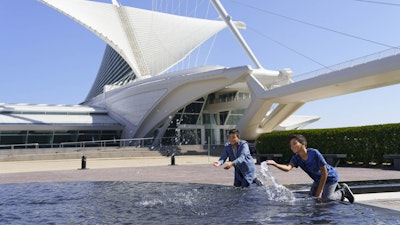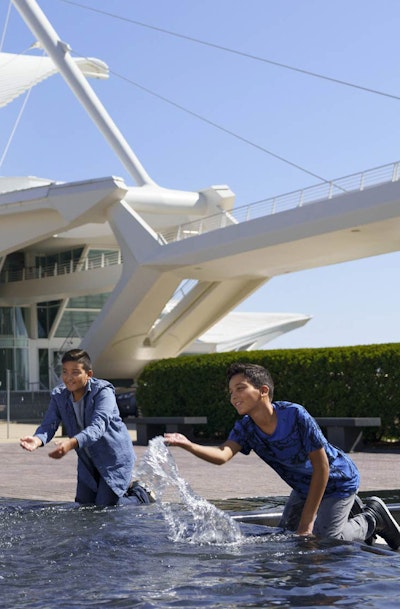Cudahy Gardens


Learn more
Welcoming visitors and providing a tranquil separation between the city and the Museum are the gardens designed by world-renowned landscape architect Dan Kiley (1912–2004). The Museum grounds were redesigned in conjunction with the Quadracci Pavilion, with a network of gardens, plazas, and fountains. The geometric patterns of Kiley’s Cudahy Garden work well to integrate the site as a whole, reflecting the formal articulation of Eero Saarinen’s modernist War Memorial Center and counterbalancing Santiago Calatrava’s more organic but recurring patterns—the Quadracci Pavilion beside the garden, and the bridge and brise soleil soaring above it.
Running parallel to the Calatrava-designed Quadracci Pavilion is a formally organized rectangular garden that measures 600 feet by 100 feet. The garden is divided into five lawns by a series of 10-foot-tall hedge lines; two paved plazas with fountains that rise to 35 feet bookend the grassy expanse. Connecting the plazas is a narrow water channel that runs the entire length of the garden. Water jets within the channel create a solid 4-foot-high water curtain that dances and sparkles with fiber optic lights. Find your place on a bench and enjoy. Enlivening other sections of the landscape around the Museum are a grove of linden trees and a stand of Sargent crabapple trees with a periwinkle groundcover. The gardens are named for philanthropist Michael Cudahy, whose donation made the landscape design possible.
Dan Kiley was known for his formal geometric approach to landscape architecture. His modernist designs typically used lawns, tree-lined walkways, small groves, and ribbons of water or pavement, set in repeated patterns. He was inspired by formal European gardens, and believed that geometry was an inherent aspect of human nature. He collaborated with many modernist architects—including Eero Saarinen.
